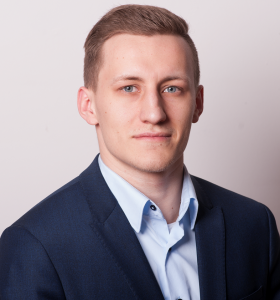DTD&O 2023
Paris | December 14, 2023
INTERNATIONAL FORUM
ON DIGITAL TWIN DESIGN & OPERATIONS
Exploring the potential of systems digital twins in industrial process lifecycle management
Paris | December 14, 2023
The 1st edition of the “International Forum on Digital Twin Design & Operations“ is an upcoming event that this year aims at aims to explore the potential of system digital twins in complex industrial process modeling and simulation.
This forum will bring together experts, researchers, and industry leaders from around the world to share their insights, experiences, and knowledge on digital twin solutions. The event will provide a unique opportunity to learn about the latest developments in digital twin design and operation, including the challenges and opportunities of creating and managing digital twins in different industrial sectors.
Attendees can expect to engage in thought-provoking discussions, interactive sessions, and networking opportunities with peers and experts in the field.
The forum promises to be a valuable platform for exploring the future of digital twin technology and its potential to revolutionize complex industrial processes
Program
9h00
Welcome Speech
Welcome Speech
Abdelkrim Doufene (Chairman of the conference), Programmes & Strategy Director | IRT SystemX
9h15
Opening Keynote
From Theory to Value: Unveiling the Power of Digital Twins
Christophe Devillers, VP Digital Transformation Engineering 4.0 | Safran
In this opening keynote, Christophe Devillers will share Safran’s views and ideas on transitioning from theoretical frameworks to a tangible, value-generating use case. He will share his thoughts on technology integration, data-driven strategies and different industrial applications that can unlock the potential of digital twins at Safran. Through case study and cutting-edge perspectives, he will explain how his teams view Digital Twins, and will share his thoughts on harnessing the true potential of Digital Twins to create tangible value
10h00
Presentation
Digital Twins for a Resilient and Sustainable Industry
Amira Ben Hamida, Senior R&I Program Coordinator, R&D Manager | IRT SystemX
Digital Twins are key enablers for the industry of the future.
How to take benefit from this technology and make it serve the industrial technical and business know-how ?
What are the key success factors for adopting standardised and platform agnostic digital twins ?
10h45
Coffee break
11h05
Presentation
An Industrial Digital Twin classification framework
Emmanuelle Abisset-Chavanne, Professor | ENSAM, campus de Bordeaux / I2M
The Digital Twin paradigm is a very promising technology that can be applied to a wide range of fields and applications but is sorely lacking in a commonly accepted framework for definitions and use cases classifications. Using a bottom-up approach, this paper aims to formalize the concept and use of Digital Twins to rationalize its adoption across a range of industrial sectors.
The study is based on a large set of Digital Twin use cases collected from Digital Twin practitioners in a variety of industry verticals, from which a set of 23 use case types has been identified by the technical group “Jumeau Numérique” of the “Alliance pour l’Industrie du Futur” (AIF). This field data has been extracted, abstracted, grouped and synthesized to build an actionable Digital Twin use case classification framework comprising 23 use-case types. This work of collecting and classifying general use case types has been complemented by a study of the common aspects proposed in academic and industrial definitions of Digital Twin, to combine them in a pragmatic definition, on which the AIF group has converged to.
This work describes the resulting classification framework and illustrates it by detailing real industrial use cases, highlighting their respective added value and their application fields.
The main contributions of this work consist in proposing, from a joint industrial and academic perspective, i) the first domain-independent and industry-focused collection of use cases types of the digital twin technology, ii) a simple framework to classify the digital twin use cases and their requirements, iii) a consensual general definition of the industrial digital twin to contribute to the structuring and standardization of this very active ecosystem.
11h25
Papers
#1 ATM Twin, an Air Traffic Management Digital Twin
Gabriel Mesquida-Masana, Chief Product Owner ATM Twin, Airspace Mobility Solutions | Thales
AIR Lab is a joint research lab by CAAS (Civil Aviation Authority of Singapore) and Thales created to drive ATM innovation and adoption of new technologies in Air Traffic Management. Since its inception in 2019, the AIR Lab team has grown, now hosting more than 50 members comprising ATM experts, air traffic controllers, developers, and engineers.
The ATM Twin projects a ground-breaking initiative that plays a vital role in developing future ATM capabilities. The team have been working closely on this project since March 2021, recognizing the importance of rapid innovation in the complex ATM environment.
The ATM Twin is a cloud-native platform designed for ANSPs (Air Navigation Services Providers) to prototype, analyse live and historical data and improve their operations quickly and safely. By mirroring an entire ATM system virtually, air traffic controllers can engage in what-if scenarios , optimize their workflow and try new functionalities and configurations.
The ATM twin plays a key role in advancing key topics such as Trajectory-based Operations (TBO) and in incorporating new technologies within the security and safety constraints of the ATM domain. The collaboration fosters the adoption of greener aviation practices to reduce carbon emissions such as the Continuous Descent Operations (CDO) tool that is currently under development in AIR Lab.
Continuous Descent Operations (CDO) have been prototyped in Changi Airport (Singapore, ninth busiest airport of the world, and world best airport in 2023, for 12th time). They run with live traffic in May and June 2023.
The presentation introduces the ATM Twin, explains its technical design and cloud-native approach, shows several use cases and focuses on the recent CDO trials, including a demo of live traffic, CDO advisory, and a glimpse into the conclusions of the trials by using dashboards.
#2 Digital Twin systems and Industrial applications
Amitkumar Sawant, Future Offer Sr. Marketing Leader, Global Solutions Architect – Industry BU (India) | Schneider Electric
The paper explains the digital transformation of industries through various enablers of which Digital twin is one of the most acceptable and profitable technology.
The whitepaper explains application of Digital twin technology in various industry verticals and its significance in bringing collaborative ecosystem for stakeholders to share and analyze data.
It talks about the initiatives of digital transformation or data sharing an analysis in different countries and also how standardization brings interoperability and sustainability in maintaining the the ecosystem.
Finally it throws light on few selected industrial us cases and models on the transformation can be articulated for better results.
#3 The Journey of Making and Using A Digital Twin
Pierre-Jean Riviere, Digital Twin Solutions Leader | Airbus
Making a Digital Twin is complex, time consuming and expensive. What is the recipe for a successful story?
Based on our failures and successes, here Airbus will share the lessons learnt from different projects about how we should make a Digital Twin.
Pierre-Jean RIVIERE, Digital Twin Solutions Leader in the Airbus digital transformation programme called Digital Design Manufacturing and Services will present how to be prepared and to size a Digital Twin project.
#4 Physics based and data enhanced digital twins for green hydrogen production
François Sanson, Head of Modelling, Optimization and Data Analysis | Lhyfe
While digital twins are becoming industry standard in mature industries such as car and aerospace industry, their use in new fields such as green hydrogen production remains vastly unexplored. Lhyfe is a European leader of renewable hydrogen, i.e., hydrogen produced by electrolysis from renewable energy sources.
The objective of this presentation is twofold : first to present a use case of successful digital twin construction and optimization in the field of green hydrogen production; secondly to present a methodology for constructing useful digital twins that are not solely the collection of massive datasets or standalone simulation codes but a full scale physics based model completely integrated to a modern data flow pipeline to get the best of the two worlds.
Consequently, we illustrate the uses cases for Lhyfe of such digital twin ranging from control optimization through model in the loop strategies to anomaly detection.
12h45
Lunch & Poster Session
Parametric Virtual Model: a Digital Framework for Parametric Design Empowered by Artificial Intelligence Requirement Engineering
Riccardo Cocci, Assystem
MBSE for Digital Twins
Alexandre Aumaire, Capgemini Engineering
Unified data collect for Digital Twin
Dimitri Renard, UFR Sciences Exactes et Naturelles, Université de Reims
14h00
Presentation
Standardization efforts for the digital twin: big picture of the ISO and IEC activities
Christophe Mouton, Expert normalisation CAO 3D, PLM, BIM, Web3D et visualisation | EDF/AFNOR
Digital twin is the new age of industrial data and modelling for products of any kinds and any size. We will highlight the latest standardization works at ISO and IEC, we will discuss how the already existing standards will help to address the Digital Twin standardization challenges.
14h45
Presentation
When ‘Good’ is not Good Enough: Leveraging simulation in the Virtual Twin Experience for a more sustainable future
Charles Luzzato, Director of Industrial Equipment, Industry Processes SIMULIA | Dassault Systemes
It is commonly accepted that “the better is the mortal enemy of the good” (Montesquieu), a saying that is put into application numerically by the Pareto principle. Applied to engineering, one should strive to achieve the majority of the outcome with the smallest amount of effort, and not waste time and profitably on improving a “Good” design needlessly. Perhaps an infamous example of this is the RBMK reactor, in use at Chernobyl – Powerful, minimalistic and cost-effective concept – but uncommonly unstable and difficult to control. It is not possible to say whether the environmental and human catastrophe that unfolded on April 26th 1986 were directly cause by a fervent application of the Pareto principle; what can be said for certain is that the design could have been “Better” (NIKIET).
The Digital Twin helps us understand and measure the present; simulation and the Virtual Twin Experience bring us perspective and reveal what is achievable in the future. In this presentation, we will use these twins to challenge this 18th century adage and the Pareto principle – not in their fundamentals, but rather in our understanding of their implications. Looking at industrial application examples, we will show how the Virtual Twin Experience can be applied to tackle sustainability challenges, and redefine what is “Good Enough” today.
15h30
Coffee break
15h50
Papers
#5 A digital twin methodology for predictive maintenance of reciprocating compressor for gas transport
Chetra Mang, Senior Research Engineer | IRT SystemX & Grégory Jardon, Data Scientist | GRTgaz
Digital twin for predictive maintenance aims to develop and establish digital twins capable of monitoring how the state of health of industrial systems evolves. It focuses on the definition of digital twins capable of acquiring data in real time/delayed time, and processing it in order to assess the state of health of the industrial system. Furthermore, the digital twin must be able to predict and optimize how the lifetime of the physical system evolves, based on the different health indicators identified.
The presented work targets the GRTgaz’s use-case which deals with circumvention of the system failures and injection stop of the distribution network toward the transport network. To do so, the reciprocating compressors need to be efficiently maintained. The digital twin methodology is proposed to establish the maintenance policies by using the digital twin coupled between sensor data and physical simulation. The data acquisition and physical model methodology have been proposed. The primary results of physical modeling are presented.
#6 Model-Based Development of Variant-Rich Systems Using Digital Twins
Heinrich Wagner, Scientific Assistant | University of Applied Sciences Munich
The utilization of digital twins in the realm of system development and operation has evolved into an undoubtedly successful paradigm for mitigating developmental timeline constraints and augmenting the functional spectrum of a given system. However, the establishment of the digital twin necessitates bespoke developmental processes that must be inherently aligned with the intricacies of the system being supported.
This work introduces an approach which, firstly, leverages an identical repository of developmental artifacts for both the target system under development and its corresponding digital twin, and secondly, adeptly manages the variability inherent in application scenarios, system architecture, and the structure of the digital twin through the application of Product Line Engineering principles.
16h30
Presentation
From hybrid (data & physical) models to decision support tools
Jean-Michel Ghidaglia, CEO | deepika.ai & Professor | UM6P
Hybrid data-physics models rely both on the most faithful possible representation of physical phenomena and on statistics and learning from large observation databases. These models are now leaving R&D centers to lead to decision support tools made available to operational staff in the industry.
17h15
Closing Keynote
Systemic Digital Twins to Optimize Industrial Systems Strategy and Operations
Daniel Krob, CEO | Systemic Intelligence
We will present the notion of a systemic digital twin which ensures continuity between model-driven system engineering and digital & predictive simulation. We will illustrate this approach with a case study.
18h
End
Speakers
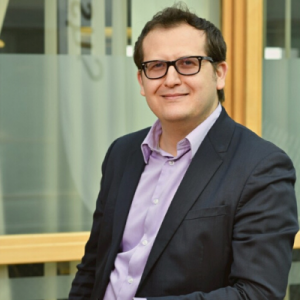
Abdelkrim Doufene (Chair)
Programmes & Strategy Director

Christophe Devillers
VP Digital Transformation Engineering 4.0
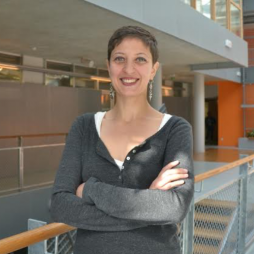
Amira Ben Hamida
Senior R&I Program Coordinator, R&D Manager

Emmanuelle Abisset-Chavanne
Professor

Gabriel Mesquida-Masana
Chief Product Owner ATM Twin, Airspace Mobility Solutions

Amitkumar Sawant
Future Offer Sr. Marketing Leader, Global Solutions Architect – Industry BU (India)

Pierre-Jean Riviere
Digital Twin Solutions Leader

François Sanson
Head of Modelling, Optimization and Data Analysis

Christophe Mouton
Data standardization expert, chair of the French mirror standardization committees AFNOR-CP IDMI co-chair of the AFNOR/CN JN

Charles Luzzato
Director of Industrial Equipment, Industry Processes SIMULIA
Don’t miss the new 2024 edition!
Organizing & Program Committee

Abdelkrim Doufene (Chair)
Programmes & Strategy Director

Daniel Krob
CEO, Former Institute Professor, Ecole Polytechnique – Distinguished Visiting Professor, Tsinghua University – INCOSE Fellow

Nabil Anwer
CIRP Fellow – Professor, Paris Saclay University – Deputy Director, Automated Production Research Laboratory – Director, Sino-French PLM Innovation Center, Tsinghua University

Ariane Piel
Research Engineer in Mathematics and Computer Science
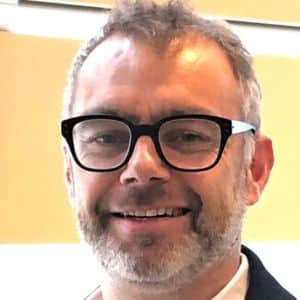
Fabien Mangeant
Chief Data & AI Officer
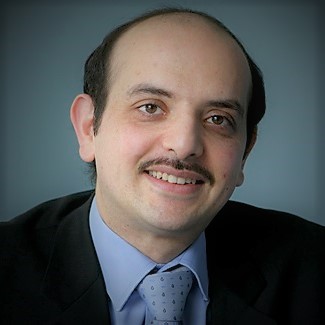
Oussama Cherif
Innovation Director
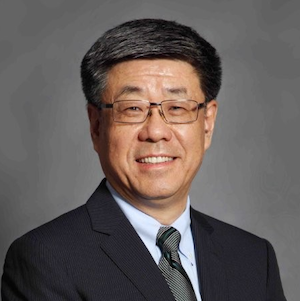
Xinguo Zhang
Distinguished Professor, Director of Complex Systems
Engineering Research Center, President of INCOSE Beijing
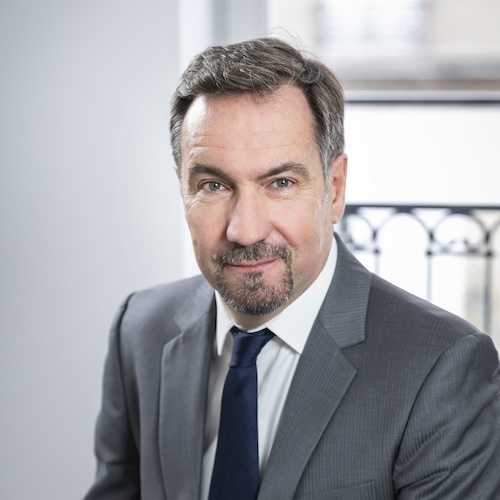
Christophe Tilmont
VP Marketing & Communication

Jan-Erik Myrvold-Baudard
Work package Manager at Industry 4.0/Factory of the
Future Program

Thierry Coupaye
VP Research Augmented Operations. Senior Orange Expert, Future Networks. Senior IEEE, Fellow SEE
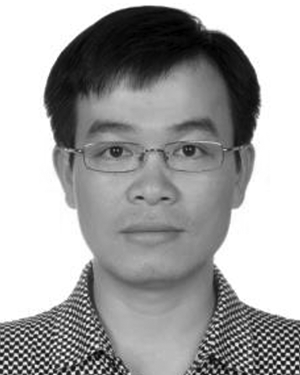
Fei Tao
Professor

John Ahmet Erkoyuncu
Professor in Digital Engineering

Rainer Stark
Professor

William Becamel
Expert Leader Numerical Modeling and Simulation

Eric Lutters
Full Professor of Information driven Product Development & Engineering

François de la Fontaine
Directeur adjoint Transformation digitale Manufacturing 4.0

Patrick Lamboley
Standardization & Interoperability Vice President

Thierry Daneau
Expert Leader industry 4.0
The conference venue
Élysées-Biarritz
24 Rue Quentin-Bauchart, 75008 Paris
Public transport
– Line 1: George V station
– Line 9: Franklin D. Roosevelt station
– Line A: Charles de Gaulle – Étoile station
Public parking
– Indigo Pierre Charron Champs-Élysées
– Interparking Berri Champs-Élysées

